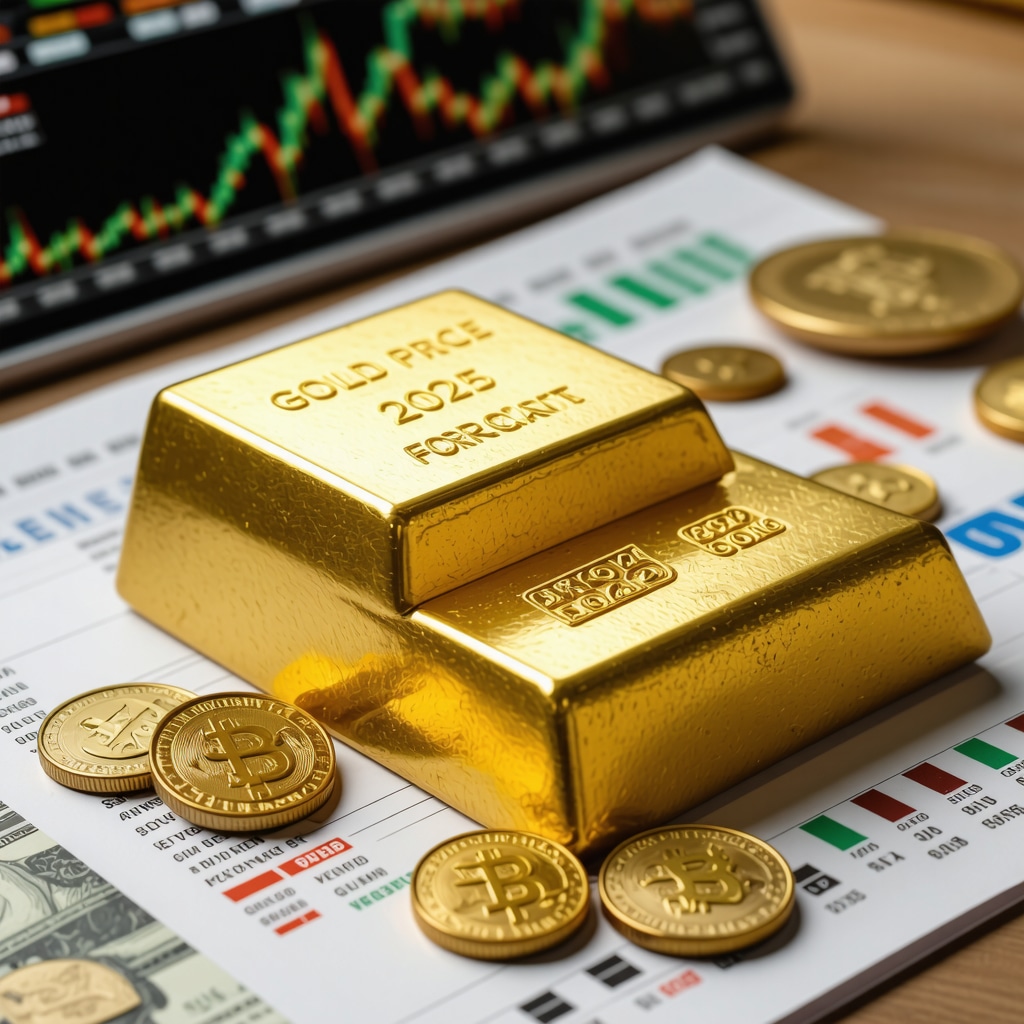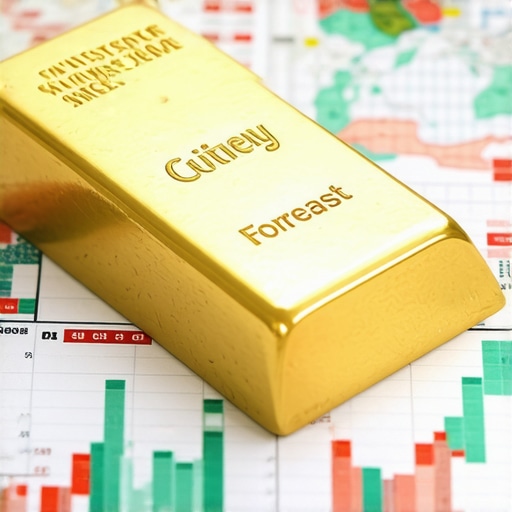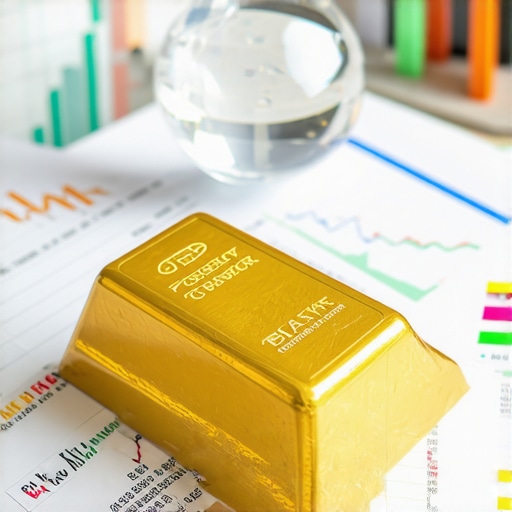Peering Beyond the Horizon: What Drives Gold Prices as We Approach 2025?
As global markets continue to navigate an intricate web of geopolitical tensions, inflationary pressures, and evolving monetary policies, the future of gold prices in 2025 grows increasingly compelling. Gold, renowned for its timeless value and role as a hedge against uncertainty, is subject to a constellation of factors that savvy investors must understand to position themselves advantageously. This expert analysis delves into the nuanced forces shaping gold price forecasts for 2025, going beyond the headlines to reveal the deeper market currents.
Inflation and Interest Rates: The Tug of War Influencing Gold’s Allure
Historically, gold has thrived in periods of elevated inflation, serving as a safeguard against the erosion of purchasing power. Yet, the interplay between inflation and central bank interest rate decisions is pivotal. Rising interest rates, often implemented to tame inflation, can dampen gold’s appeal by increasing opportunity costs for holding non-yielding assets. However, if inflation outpaces rate hikes or if real yields turn negative, gold typically regains momentum. Investors should closely monitor Federal Reserve policies and global inflation metrics, as these will critically impact gold’s trajectory in 2025.
Geopolitical Uncertainty: Gold’s Timeless Role as a Safe Haven
The geopolitical landscape remains fraught with unpredictability—from trade tensions to regional conflicts—that often triggers flight-to-safety buying in gold markets. For instance, recent escalations in global power rivalries have historically coincided with surges in gold demand. This dynamic underscores gold’s enduring status as a strategic asset during turbulent times, a factor that analysts expect to continue driving price volatility and potential upward pressure into 2025.
How Will Technological Innovations and Mining Supply Affect Gold Prices in 2025?
Beyond macroeconomic and geopolitical factors, technological advancements in mining and exploration are reshaping gold supply dynamics. Enhanced extraction techniques and the discovery of new reserves could ease supply constraints, potentially tempering price spikes. Conversely, environmental regulations and rising production costs might limit output growth. An informed investor must weigh these supply-side variables alongside demand trends to fully grasp the price outlook. For a deeper dive into gold supply-demand dynamics, see this comprehensive analysis.
Currency Fluctuations and Market Sentiment: The Subtle Catalysts
The strength of the US dollar remains a critical determinant of gold prices, given the metal’s dollar-denominated nature. A weaker dollar typically boosts gold’s attractiveness to holders of other currencies, while a robust dollar can suppress it. Moreover, investor sentiment—shaped by economic data releases, equity market performance, and speculative flows—adds layers of complexity. Advanced traders often capitalize on these sentiments through sophisticated gold trading strategies, which can influence short-term price movements ahead of fundamental shifts.
Embracing Gold’s Strategic Role in Your Portfolio Today
Understanding these multifaceted drivers is crucial for optimizing investment decisions as 2025 approaches. Whether you are a beginner or seasoned investor, exploring expert strategies to safeguard and grow your wealth via gold is indispensable. To start strengthening your portfolio with gold smartly, consider reading our key tips for beginner investors. Engaging with the latest forecasts and market insights empowers you to navigate volatility with confidence.
Curious about how these factors might specifically impact your gold investment choices? Share your thoughts or questions below, and join a community of informed investors committed to mastering gold markets.
For authoritative insights on gold’s relationship with inflation and monetary policy, the International Monetary Fund’s working paper on gold and inflation provides a rigorous foundation supporting the nuanced interplay discussed here.
The Balancing Act of Gold Supply and Demand: Lessons from My Investment Journey
Reflecting on my own investment experiences, I’ve found that understanding the nuances of gold supply and demand is more than just watching numbers—it’s about interpreting the stories behind them. When I first dived into gold investing, the idea of new mining technologies easing supply constraints seemed straightforward. Yet, I quickly realized that environmental policies and local regulations often introduced unexpected hurdles that could tighten supply instead.
This tug-of-war between technological progress and regulatory challenges makes gold supply far from predictable. For instance, a recent report from the World Gold Council highlighted that while new mining methods increase efficiency, the environmental impact concerns continue to restrict expansion in several key mining regions. This dynamic interplay means that as an investor, staying informed about both technological innovations and policy shifts is crucial for anticipating price movements.
Sentiment Swings and Currency Movements: Navigating the Emotional Currents
Gold’s price is not just about cold, hard data; it’s deeply influenced by market sentiment and currency fluctuations, areas I’ve learned to watch closely through personal experience. Remembering the volatile months after major geopolitical events, I noticed how quickly investor emotions could trigger sharp gold price swings. The US dollar’s strength, in particular, has often been a reliable barometer: when it weakens, gold tends to shine brighter globally.
When I started integrating such insights into my strategy, I began exploring advanced trading techniques to harness market volatility effectively. For those intrigued by these methods, a comprehensive guide on gold trading techniques can offer practical steps to maximize profit potential amid unpredictability.
How Can You Blend Personal Insights with Market Trends to Make Smarter Gold Investments?
This question often comes up in conversations with fellow investors. My answer is that combining personal experience with a solid understanding of macroeconomic trends creates a powerful investment approach. For instance, tracking central bank policies alongside my observations of mining supply developments has allowed me to time my gold purchases more judiciously.
I encourage readers to share their stories and questions about gold investing. Whether you’re just starting or have years of experience, your insights enrich the community. Feel free to comment below or check out our detailed articles like key beginner tips for investing in gold to fortify your strategy.
Macro-Financial Interplays: Quantitative Easing, Real Yields, and Their Hidden Impact on Gold Prices
While traditional factors like inflation and interest rates dominate discourse, the nuanced relationship between quantitative easing (QE) programs and real yields often escapes casual investors’ radar. Central banks’ unconventional monetary policies, particularly large-scale asset purchases, inject liquidity that tends to depress real yields. This environment creates a fertile ground for gold’s resurgence, as negative real yields erode the opportunity cost of holding non-yielding gold, enhancing its appeal as an inflation hedge and store of value.
For instance, post-2008 QE cycles demonstrated a significant correlation between expanded central bank balance sheets and gold price rallies. However, as we near 2025, the tapering or potential re-expansion of QE programs, combined with the evolving inflation expectations, will intricately influence gold’s price trajectory. Investors must therefore integrate real yield trends and central bank balance sheet dynamics into their forecasting models to avoid simplistic interpretations. The Bank for International Settlements’ working paper on real yields and asset prices offers an authoritative exploration of these mechanisms.
Environmental, Social, and Governance (ESG) Factors: How Sustainable Mining Practices Are Reshaping Gold’s Supply Landscape
Beyond technological advancements, the rising emphasis on ESG criteria is materially impacting gold production and investment flows. Mining companies face mounting pressure to adopt sustainable extraction methods, minimize environmental footprints, and ensure social responsibility in their operations. These driving forces can constrain supply growth due to increased compliance costs and operational delays but also create differentiated investment opportunities in ESG-compliant gold assets.
Moreover, the growing trend toward green gold ETFs and funds influences demand-side dynamics, as environmentally conscious investors prioritize ethical sourcing. This bifurcation in supply-demand frameworks adds layers of complexity to price forecasting, demanding that investors incorporate ESG analytics into their due diligence processes.
What Advanced Analytical Tools Can Investors Use to Predict Gold Price Volatility Amid Complex Market Variables?
In the face of multifaceted drivers, traditional forecasting models may fall short. Advanced investors increasingly rely on machine learning algorithms, sentiment analysis, and high-frequency trading data to capture subtle market cues and predict price volatility with greater precision. For example, natural language processing (NLP) techniques applied to geopolitical news and central bank communications provide real-time sentiment indicators that often precede market moves.
Furthermore, integrating macroeconomic databases with alternative data sources, such as satellite imagery tracking mining activity or social media sentiment, offers a holistic view of supply-demand shocks. These cutting-edge methodologies empower investors to anticipate gold price fluctuations more adeptly than relying solely on historical trends.
Ready to elevate your gold investment strategy with data-driven insights? Explore our comprehensive resources on leveraging quantitative analytics and ESG integration for smarter gold investing.
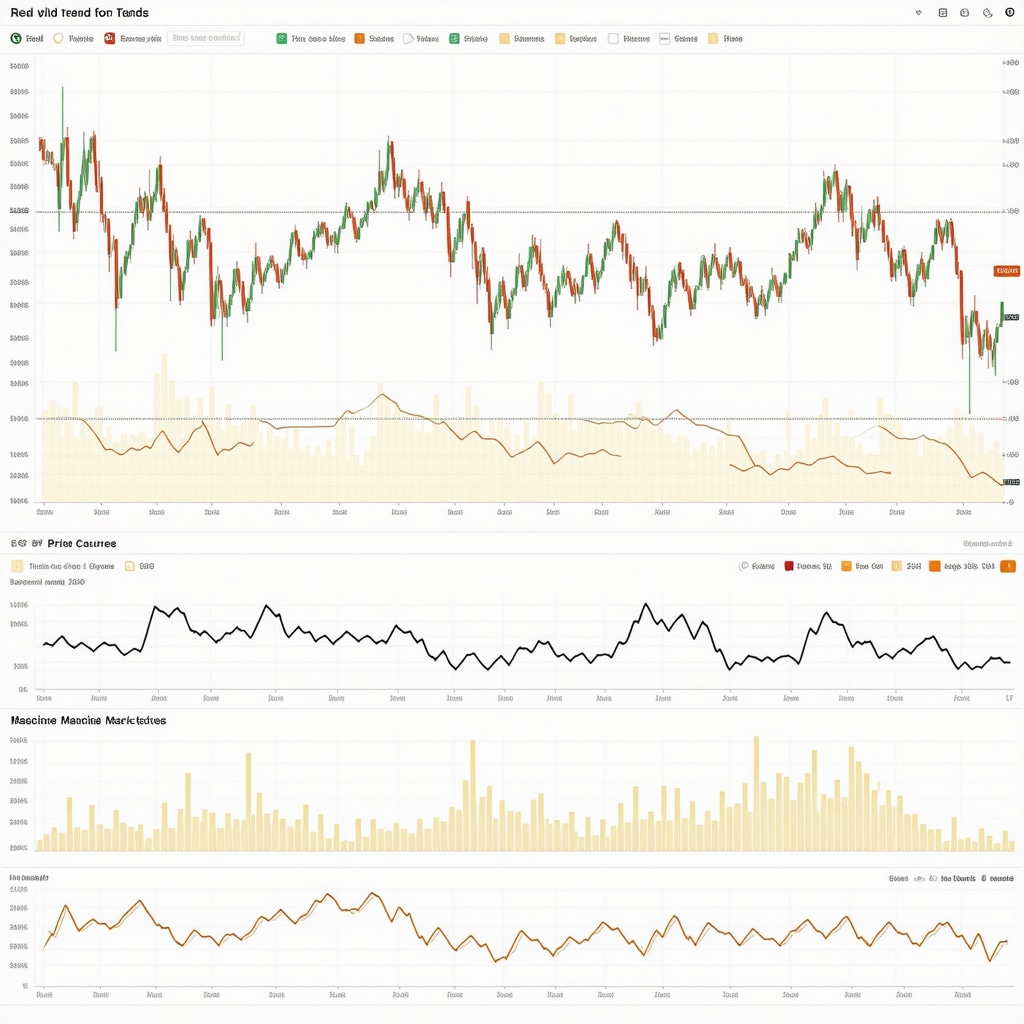
Hedging Strategies for Turbulent Times: Beyond Simple Gold Allocation
Seasoned investors understand that merely allocating a fixed percentage of a portfolio to gold may not suffice in managing risk effectively as 2025 approaches. Sophisticated hedging strategies involve dynamic rebalancing, options-based tactics, and cross-asset correlation analysis. For instance, gold derivatives such as futures and options allow for tailored exposure and risk mitigation, while combining gold with other commodities or currencies can optimize diversification benefits.
Understanding how gold behaves in correlation with equities, bonds, and cryptocurrencies during various market regimes is critical. The nuanced interplay requires continuous monitoring and agile portfolio adjustments to capitalize on gold’s safe-haven properties without sacrificing overall returns.
Decoding ESG’s Intricate Influence on Gold’s Market Dynamics
In recent years, Environmental, Social, and Governance (ESG) considerations have transcended buzzword status, emerging as pivotal determinants reshaping gold’s supply and demand equilibrium. Mining operations increasingly grapple with stringent environmental mandates, community engagement imperatives, and transparent governance protocols, which collectively recalibrate production costs and timelines. This evolving paradigm not only constricts supply growth but also recalibrates investor appetites, favoring gold sourced via sustainable practices. Consequently, ESG-compliant mining ventures command premium valuations, and green-focused investment vehicles, such as sustainable gold ETFs, are gaining traction among ethically conscious portfolios.
What Advanced Analytical Tools Can Investors Use to Predict Gold Price Volatility Amid Complex Market Variables?
Traditional predictive models often falter in capturing gold’s multifactorial price drivers. To surmount this, cutting-edge investors deploy sophisticated machine learning frameworks, integrating natural language processing (NLP) to analyze geopolitical discourses and central bank communications in near real-time. Additionally, sentiment analysis algorithms parse social media and news feeds, extracting nuanced market moods that presage volatility spikes. High-frequency trading data further refines short-term forecasts, while satellite imagery tracking mining site activities provides unprecedented transparency into supply fluctuations. By amalgamating these heterogeneous data streams, investors achieve a granular, anticipatory understanding of gold price dynamics, facilitating more informed decision-making under uncertainty.
For a detailed exposition on leveraging quantitative analytics in commodity markets, the Bank for International Settlements’ working paper on real yields and asset prices offers invaluable insights: BIS Working Paper No. 122.
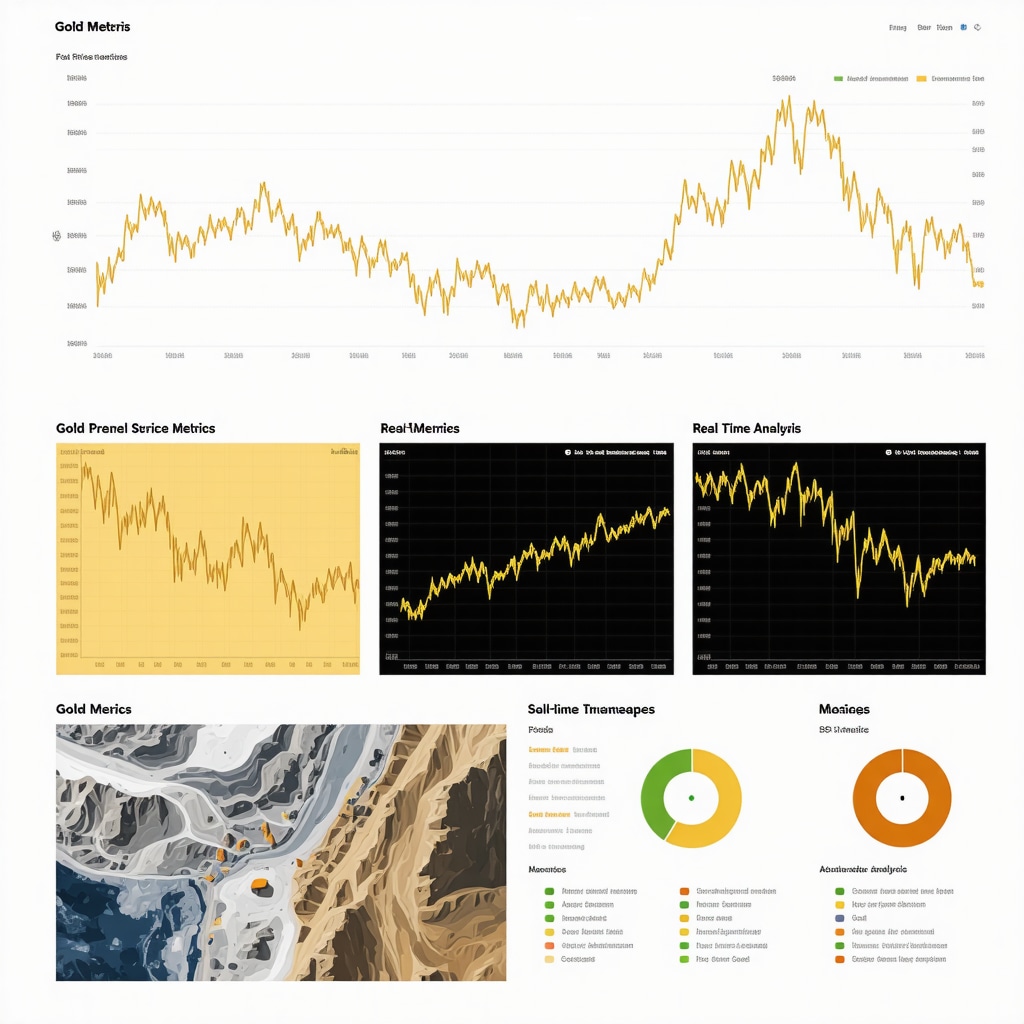
Dynamic Hedging Strategies: Navigating Gold Investment Risks with Precision
As the 2025 horizon approaches, static gold allocations may inadequately address the multifaceted risks inherent in volatile markets. Advanced investors employ dynamic hedging techniques encompassing options strategies—such as protective puts and covered calls—and futures contracts to tailor exposure and mitigate downside risks. Cross-asset correlation analysis further informs timing decisions, exploiting gold’s historically inverse relationship with equities and bonds during crises, while also assessing its interplay with nascent asset classes like cryptocurrencies. This agility enables portfolio optimization, balancing safe-haven protection without unduly compromising growth potential.
Furthermore, algorithmic rebalancing frameworks, calibrated with real-time market data and predictive analytics, empower investors to adjust gold positions responsively amid shifting macro-financial landscapes. This approach necessitates robust risk management protocols and continuous market intelligence but offers superior resilience against systemic shocks.
Synergizing Macro-Financial Indicators and Technological Insights for Superior Forecasting
Integrating macroeconomic variables—such as real yields, quantitative easing trajectories, and currency fluctuations—with technological innovations in mining and ESG adoption constitutes a holistic forecasting model for gold prices. Recognizing the subtle feedback loops among these dimensions enables investors to anticipate inflection points that simplistic models overlook. For instance, tapering quantitative easing amidst tightening ESG regulations could simultaneously constrain supply and elevate demand from sustainability-focused funds, precipitating upward price pressure.
To harness this synthesis effectively, investors must cultivate multidisciplinary expertise, combining financial acumen with data science and environmental policy awareness. This comprehensive lens is indispensable for navigating gold’s increasingly complex investment landscape as 2025 unfolds.
Elevate your gold investment approach by integrating these advanced insights and strategies. Engage with our expert community to unlock nuanced forecasting models and dynamic portfolio techniques tailored for 2025’s challenges.
Frequently Asked Questions (FAQ)
What key factors most significantly influence gold prices as we approach 2025?
Gold prices in 2025 are shaped by a complex interplay of inflation trends, central bank interest rate policies, geopolitical uncertainties, currency fluctuations—especially the US dollar strength—and evolving supply-side dynamics including mining innovations and ESG regulations. Advanced macro-financial indicators like real yields and quantitative easing programs also critically impact gold’s investment appeal.
How do inflation and interest rates together affect gold’s attractiveness?
While gold traditionally acts as an inflation hedge, rising interest rates increase the opportunity cost of holding non-yielding gold, which can suppress prices. However, if inflation surpasses rate hikes or real yields become negative, gold’s allure typically strengthens, making the nuanced balance between these variables essential for forecasting.
Why is gold considered a safe haven during geopolitical turmoil?
In times of geopolitical instability—such as trade conflicts, regional wars, or global power shifts—investors seek assets that preserve value. Gold’s historical role as a safe haven stems from its intrinsic scarcity and universal acceptance, driving demand and price spikes amid uncertainty.
How do technological advances and ESG concerns influence gold supply and prices?
Technological progress in mining can increase extraction efficiency and potentially ease supply constraints, but stringent Environmental, Social, and Governance (ESG) standards impose operational costs and regulatory hurdles that may restrict output growth. This dual effect introduces complexity to supply forecasts and can affect price volatility.
What role do currency fluctuations play in gold pricing?
Gold is priced in US dollars globally, so a weaker dollar often makes gold cheaper for holders of other currencies, boosting demand and prices. Conversely, a stronger dollar can dampen gold’s appeal. Monitoring currency market trends is vital for understanding short- and medium-term gold price movements.
Can advanced analytics improve gold price predictions?
Yes. Cutting-edge tools such as machine learning models, natural language processing for sentiment analysis, high-frequency trading data, and alternative datasets like satellite imagery provide granular insights into supply-demand shocks and market sentiment, enabling more precise volatility forecasting than traditional models.
What are some sophisticated hedging strategies involving gold?
Beyond simple portfolio allocation, investors use dynamic hedging tactics including options (protective puts, covered calls), futures contracts, and cross-asset correlation analysis to tailor exposure and mitigate risks. Algorithmic rebalancing informed by real-time data further enhances portfolio resilience against market turbulence.
How can individual investors blend personal insights with macro trends to optimize gold investments?
Combining firsthand experience—such as observing mining developments or geopolitical shifts—with understanding broader economic variables like central bank policies and inflation creates a robust investment approach. Engaging with expert resources and community discussions can also deepen strategic decision-making.
How does quantitative easing influence gold prices?
Quantitative easing injects liquidity into financial systems, often suppressing real yields and reducing the opportunity cost of holding gold. This environment boosts gold’s appeal as an inflation hedge and store of value. Changes in QE programs can thus signal potential gold price movements.
Why is ESG integration becoming essential in gold investment analysis?
ESG factors increasingly affect both gold supply—through mining practices and regulations—and demand, via the rise of green investment funds and ethical sourcing preferences. Incorporating ESG analytics helps investors identify risks and opportunities aligned with sustainability trends that impact gold’s market dynamics.
Trusted External Sources
- International Monetary Fund (IMF) Working Paper on Gold and Inflation: Offers rigorous analysis of gold’s role in inflation and monetary policy contexts, underpinning the nuanced relationship between macroeconomic factors and gold prices.
- Bank for International Settlements (BIS) Working Paper No. 122: Provides authoritative insights into real yields, quantitative easing, and asset price dynamics crucial for understanding gold’s performance amid unconventional monetary policy.
- World Gold Council Reports: Furnish comprehensive data and expert commentary on gold supply-demand fundamentals, mining technologies, and investor trends, essential for informed market analysis.
- Specialized Publications on ESG in Mining: Industry-focused research articulates the impact of environmental and governance factors on gold production and investment flows, illuminating emerging supply constraints and ethical investment opportunities.
- Cutting-Edge Financial Analytics Research: Academic and industry papers exploring machine learning, sentiment analysis, and alternative data applications enhance predictive modeling capabilities for gold price volatility.
Conclusion: Synthesizing Insights for Gold Investment Success in 2025
Navigating gold price dynamics as 2025 approaches demands a multidisciplinary lens that unites macroeconomic fundamentals, geopolitical awareness, supply-demand intricacies, and technological and ESG developments. Inflation trends, central bank policies, and real yield fluctuations form the foundational backdrop, while geopolitical tensions and currency movements add layers of complexity. Simultaneously, mining innovations and sustainability imperatives reshape supply frameworks, demanding sophisticated analytical tools and dynamic hedging strategies to capture emerging risks and opportunities.
For investors—from novice to expert—embracing this integrated perspective empowers more precise forecasting and resilient portfolio construction. Engaging with advanced data analytics, continuous market intelligence, and community knowledge-sharing will be pivotal in mastering gold’s evolving landscape.
Ready to sharpen your gold investment acumen? Share your insights, ask questions, and explore our expert content to confidently harness gold’s strategic potential in the years ahead.






